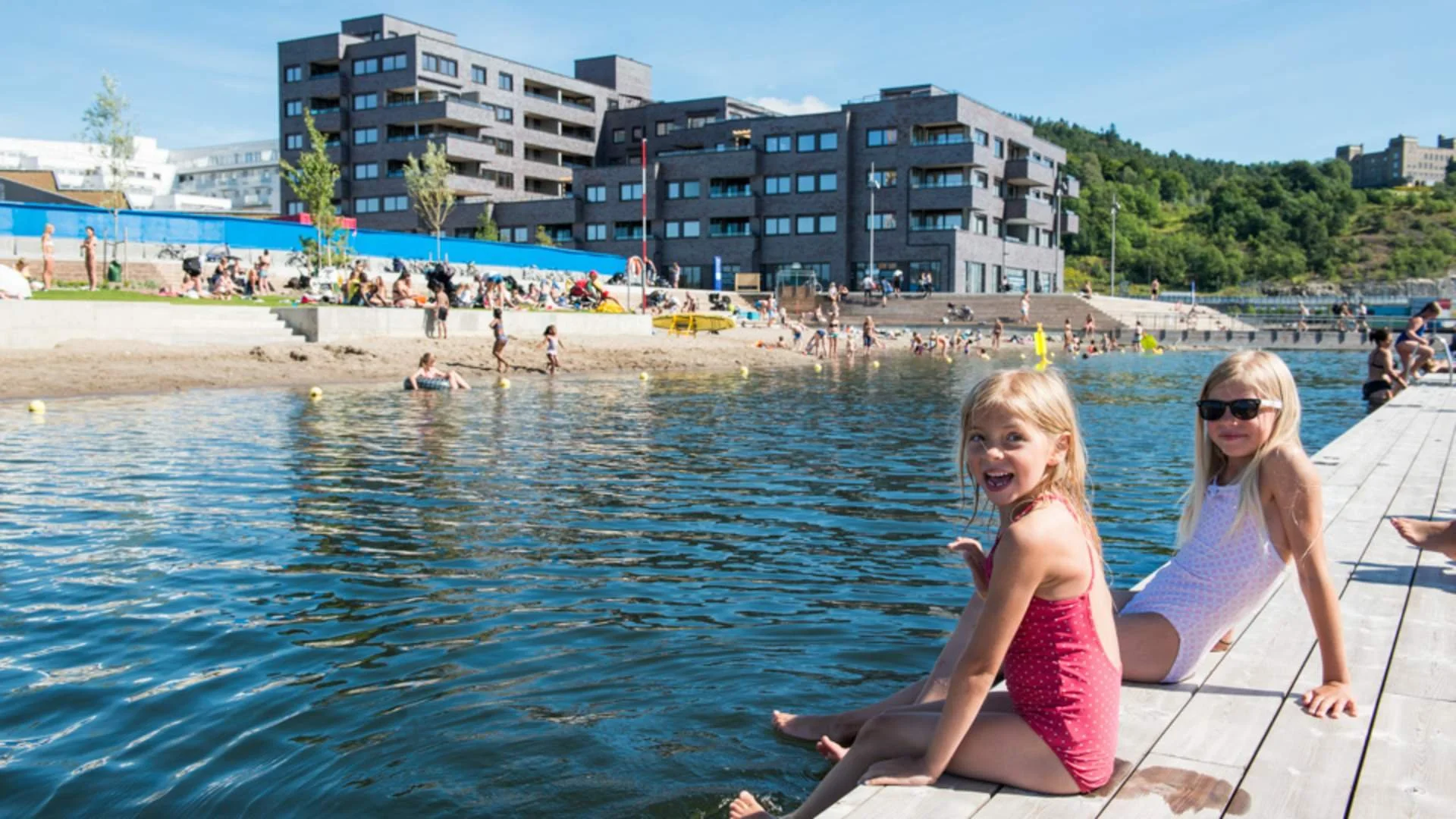Mark Mattson on Swimming in Urban Areas
By Kai Abreu
Admittedly, at first, I was wary of swimming in Canadian lakes. The stigma around urban waters had infiltrated my brain as thoroughly as the newest season of Stranger Things. Most of my friends spoke about the water as if it were straight from the upside down too. Ridiculous images of scary water monsters dragging me down into the depths of Lake Ontario flitted through my mind when a different friend asked me if I wanted to go for a swim at a beach on Toronto Island. A small little voice inside my head kept saying—surely in a country with such beautiful waters there must be clean swimming spots! So, I researched. I let my Virgo spirit come alive, guiding me to article after article, creating spreadsheets, highlighting locations, and even sending a few links to my unbelieving friends with the classic “I told you so.”
The following day, I happily jumped in the water at Gibraltar’s Point with my friend, especially after checking Swim Guide’s water quality report for the day—all tests passed. That one water adventure turned into several dozen trips to beautiful lakes all over southern Ontario. However, one fateful day stands out in my mind: the day I visited the Gord Downie Memorial Pier in Kingston, Ontario.
Gord Edgar Downie Pier opening, Kingston, ON. Image courtesy of Swim Drink Fish.
A Hip New Perspective
Two decades ago, jumping into Lake Ontario at Kingston was not only discouraged—it was illegal. Official “no swimming” signs dotted the pier, a reminder that Kingston’s infrastructure, as one of Ontario’s largest industrial cities, an infrastructure that could not keep up with the booming population, had clear environmental consequences.
However, after 20 years of hard work to clean up the city and its waters, Kingston made history. July 26th, 2018, marked the official opening of the Gord Edgar Downie Pier, a critical milestone in the city’s quest to reclaim its waters.
The Gord Edgar Downie pier became the first deep-water swimming pier in Canada, and yes, it’s named after that Gord Downie. While everyone knows him as part of the Tragically Hip, Gord was also part of the Swim Drink Fish board and stood as a fierce and relentless advocate for swimmable, drinkable, and fishable water.
As someone who loved water and lived right across Breakwater Park, Gord fought tirelessly to remove those infamous “no swimming” signs. Gord’s passion met with the W. Garfield Weston Foundation’s mission to invest $1 million into protecting the Great Lakes and reconnecting people to their waters. Through Swim Drink Fish, the Foundation invested $500,000 into the city of Kingston to bring Gord and so many Kingston residents’ dreams to life.
Now, Gord Edgar Downie Pier serves as a symbol of how cities can reclaim their waters. Thousands of people visit the pier every year, including yours-truly, the previously-lake-afraid ungraceful swimmer. However, Kingston is just one example of this global wave towards a more swimmable future.
In this blog post, you’ll learn about the Swimmable Cities movement, why connecting with natural waterways in urban areas is so important, and what you can do to build a more swimmable future.
Gord Downie. Image courtesy of Swim Drink Fish.
Just Keep Swimming Towards a Swimmable Future
The Swimmable Cities alliance launched on the eve of the 2024 Paris Olympics, riding the wave of cities working to clean up their waters for local residents. The alliance supports the grassroots movement for transforming urban waterways and holds 125 signatories from 72 cities and 27 countries. Their charter, “champions the right to swim, celebrates urban swimming culture, and honours the sacredness of water” (Swimmable Cities).
What exactly is a swimmable city though? A swimmable city must have clean enough water to swim in safely. This includes conducting, and passing, water quality monitoring tests, creating wastewater treatment systems, and rallying their communities to improve and maintain the waterway clean.
These Swimmable Cities, like Kingston, often have Swimmable Structures. These structures are designed specifically for safe swimming access. Just like not all piers are built for swimming, not all waterway structures are built for water recreation. Kingston has a wonderful swimming pier, but dozens of cities around the world have their own Swimmable Structures designed to connect their communities to local waterways. We’ll take a little tour around the Swimmable Structures of the world later on.
It Actually Is That Deep
Now, we all love going for a swim on a hot summer day. If you live in a city like Toronto, you know how quickly your summer vibe can go from cute sun dresses and brunch with the girls to, oh my god, I’m living in an actual oven. As president of Swim Drink Fish and previous Lake Ontario Waterkeeper, Mark Mattson says, “Canadian cities are on some of the best waterways in the world and water and fresh water are such central cultural themes in this country.”
Besides serving as a truly special summer pastime, swimming offers dozens of benefits for your physical and mental health. Swimming, particularly open water swimming (like lakes, rivers, and the ocean), is linked to reduced stress, anxiety, and depression. It also provides connection to nature, a known way to improve mood. It also helps improve physical fitness, such as improving cardiovascular health, strengthening your lungs, and building muscle to keep you strong.
Urban swimming, however, does much more than improve your personal health—it has the power to improve the health of our planet. Mattson had the opportunity to talk on the CBC show Ontario Today about the importance of swimming as a gateway to healing our environment.
Swim Drink Fish has worked for decades to create a more swimmable, drinkable, fishable future through several initiatives designed for the protection and restoration of our waters. A key insight that has driven this mission is that people protect the waters they love. As Mattson puts it, “Swimmable water is just one of those things that really is an entryway into environmental issues” (Mattson).
Gord Edgar Downie Pier stands as a perfect example of this belief. People wanted to swim in their own waters, but there was no safe way to do it. Years of advocacy and pushing finally got the city to invest in creating access to the water, and people showed up. Hundreds of students from the local university flock towards the pier as soon as the Canadian benchmark for acceptable short-weather hits (so sometime in March). The truly powerful thing about swimmable waters is the permeating effect they have on environmental health. According to Mark, “If you can get people swimming and into the water, the accountability and responsibility comes back on the cities to keep it clean, but it also protects it for the fish, it’s protecting our drinking water, it’s protecting the ecosystem.”
Makes sense, right? If the water is clean enough to swim in, then it’s clean enough to drink from and fish in as well.
Gord Edgar Downie Pier. Image courtesy of Swim Drink Fish.
Swimming Around the World
Kingston serves as a proud Canadian example of Swimmable Cities (and if we have anything to say about it, it certainly won’t be the last), but you can find these change-making cities across the globe.
Copenhagen, Denmark - We’re not saying that the abundance of swimmable water is the main reason why Denmark famously and consistently ranks as one of the happiest countries in the world, but it certainly doesn’t hurt! Denmark boasts four different harbour baths, the first of which, Islands Brygge, opened in 2002. The baths host a 75-meter swimming pool, a diving pool, a kids’ pool, a paddling pool, and lots of lawn space to hang out, right in the center of town.
Zurich, Switzerland - Most bodies of water in Zurich are perfectly safe to swim in, and the city has several designated areas called “Badis” (bathing areas) along Lake Zurich and Limmat River for natural swimming adventures! The oldest and most famous swimming area is the Seebad Enge, a lakeside bath swimming structure that extends into Lake Zurich!
Berlin, Germany - Berlin’s “Badeshiff” (literally ‘bathing ship’) is a barge anchored on the Spree River that provides locals and tourists with a sweet summer hangout spot. Now, Badeshiff stands in a category of its own as the water in the pool is, technically, different from the river water. While the pool takes in water from the river, it does filter and treat the water to allow for safe swimming. We love the initiative, though!
Oslo, Norway - Home of stunning fjords, modern architecture, and rich Viking history, Oslo also offers an incredible urban swimming spot through the Sørenga Seawater Pool. With a natural swimming pool, a beach, and large recreational areas, it’s no wonder Sørenga stays open year-round (with the addition of saunas) to keep people connected with water. Be honest, should we turn Toronto into an urban swimming sauna spa?
Sørenga Seawater Pool, Oslo, Norway. Image courtesy of VisitOSLO-Katrine Lunke.
Paris, France - The City of Love has made big strides in creating a stronger urban swimming culture by cleaning up the Seine. The Bassin de La Villette, a system of floating pools which sits within the canal, provides clean, monitored swimming areas for locals and visitors. Nothing screams romance like watching the sun set on the Seine.
Helsinki, Finland - Not only does Helsinki boast some incredible outdoor swimming facilities, including a filtered seawater pool, but they have an outdoor heated swimming pool. Genius. Plus, much like Oslo, Allas Pool offers winter swimming thanks to the heated pools and the inclusion of saunas. The Scandinavians know what’s up.
Sydney, Australia - Home of one of the coolest and most iconic buildings in the world, Sydney also offers the beautiful Dawn Fraser Baths, aka Elkington Park Baths, for a safe swimming experience. This tidal flow pool is enclosed by a wooden promenade, which creates a protected swimming area while using harbour water. Standing as Australia's oldest public saltwater pool, the structure blends protected historical features with modern amenities.
New York City, USA - I know many of you will raise an eyebrow at this one. NYC may have a bad rep when it comes to water cleanliness, but the city’s ambitious +POOL initiative aims to change that! While still in development (don’t buy your Hamilton tickets quite yet), this project deserves a huge shout out for trailblazing a path to making an iconic metropolitan city more swimmable. The pool will be shaped as a + sign, basically like a sectional couch but for swimming in the East River. We can’t wait to visit!
Make a Splash With Us
Phew, we made it to the end of this article. Hopefully, by this point, you’re just as jazzed about Swimmable Cities as we are. Having cities and urban areas where people can jump into natural waterways and feel safe doing so isn’t just a pipeline dream—it’s happening right now. This movement to make our cities more swimmable, and by extension, making our city waters safe to drink and fish in, will continue to shine bright at the heart of our mission, but we don’t want to do it alone. After all, these are our waters. We encourage you to support local water quality initiatives (like at Swim Drink Fish!), advocate for swimmable infrastructure (like Gord), and join local swimming groups or organizations. Connect with your community, with your water, and with the community creating healthier waters. Let’s continue to make our world more swimmable—one city at a time.




